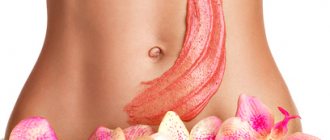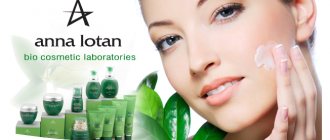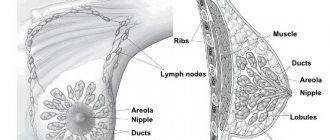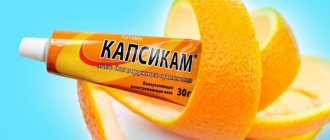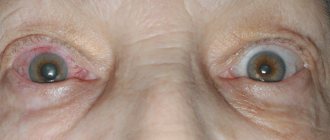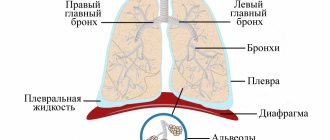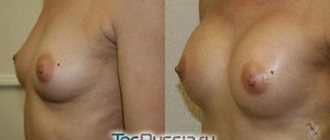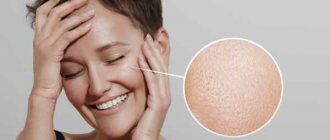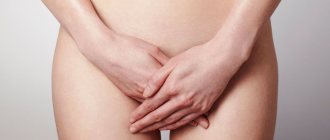Koreans never cease to delight us with unique components in Korean cosmeceuticals.
First of all, they do this for European beauties who are in a constant pursuit of eternal youth and beauty!
Phytostem cells are immature plant cells that are capable of renewing and dividing.
The main property is that they contain a high concentration of active substances! Such as fatty acids, peptides, vitamins, enzymes and antioxidants.
Why the confusion?
Tatyana Valentinovna Puchkova: What makes us treat plant stem cells with suspicion?
Of course, there is an immediate association with human stem cells. Today it is well known that the greatest hopes are placed on them for getting rid of severe chronic diseases, restoring organs, and prolonging youth. At the same time, the meaning of ongoing research in the public consciousness often comes down to the possibility of transforming (differentiating) these precursor cells into something useful: blood vessels, organs, new skin. In this context of “cell transformations,” doubts begin to erode the souls of consumers: have scientists really figured out how to turn something plant into something completely human? Well, not an organ, of course, everyone here remains realistic. And, for example, the protein collagen is so necessary for the skin. And how can stem cells from the same apple tree placed in a jar of cream be “integrated” into biochemical processes and human metabolism? In general, the most fantastic questions arise. “How similar are plant stem cells to animal stem cells is the most frequently asked question,” says Tatyana Puchkova. –The first thing to understand is that they have a common basic property. These are undifferentiated, i.e. identical cells, which then become differentiated (having the characteristics of a certain tissue, for example, liver, brain, skin). Most importantly, these cells contain enormous growth potential; they contain the maximum amount of substances necessary for renewal. As for the features of the process of cell differentiation, compatibility with the human body... This is an uncultivated field for research, it is too early to draw any conclusions. But in any case, these questions have nothing to do with cosmetics.
The fact is that the cell mass itself - entire plant cells - does not go into a cosmetic product. Manufacturers are interested in the active components it contains. To do this, the cell mass is processed in a special way, extracting from the cells those substances that are necessary to solve certain skin problems.”
Innovation in bioprocesses[edit]
Plant cells are cultured to produce plant-beneficial compounds. However, cell culture is often hampered by various factors, especially if cell culture continues for a long time. However, the high viability and structural characteristics of plant stem cells overcome the previous disadvantages of plant cell culture. Thus, plant stem cell culture is the most ideal and productive method for cell culture and phytochemical production as cells are successfully cultured in bulk while maintaining quality.
Sources of stem cells
Plant cells that are used today in cosmetics are more correctly called meristem rather than stem cells.
The unique ability of plants to restore themselves from the smallest fragments has been known for a long time. But only in the second half of the last century it became clear that it is provided by the so-called initial cells. They are contained in a special plant tissue - the meristem, concentrated in the buds, young roots and seedlings. Meristem cells are stem cells, that is, progenitor cells. They form plant tissues, they determine the growth of stems and roots, and the healing of damage. During the process of division, one of the meristem cells differentiates into a specific type (this depends on the conditions or microenvironment in which it finds itself). And the other remains unintentional stem. Unipotency means that in the future any cell of a plant organism can develop from it.
Unlike human stem cells, all plant stem cells
capable of differentiating into any of the plant cells. In humans and animals, only embryonic stem cells have this property, and then only at the first stages of the division process. In addition, specialized descendants of stem cells easily return to an undifferentiated state, which explains the vegetative propagation characteristic of plants.
What effect can you expect from cellular cosmetics?
Edelweiss, ginseng, gardenia, ginkgo biloba, red grapes, rose - these are just the most popular plants whose stem cells are actively used in anti-age cosmetics. Moreover, phytostem cells are able to influence several causes of skin aging at once. Cells with antioxidant properties interrupt chain reactions of free radicals, protecting skin cells from destruction. Others regulate the removal of toxins, others normalize the process of cell division and protect DNA... Most often, stem cells of one or two plants are used in one cosmetic product, but there are also record holders enriched with five or six similar extracts. There are also nutricosmetics (for example, the Lifeade Beauty drink from Unhwa is made from tomato plant stem cells ).
Substances of youth
All researchers admit that the meristem cells of plants contain the most powerful growth potential. This manifests itself in a high concentration of active substances. When cells become differentiated and their functions are determined, only those substances that are necessary for this function will remain. The combination of active substances is a guarantee of the future full life of the plant: its formation, protection at the “seedling” stage from unfavorable environmental factors, preservation of genetic information and synchronization of cell division processes. These substances include fatty acids, nucleic acids and amino acids, peptides, vitamins and cofactors, proliferative and antioxidant defense enzymes, phytohormones, and antioxidants. Entire classes of regulatory substances have been discovered that ensure processes of intercellular interaction: auxins, gibberellins, cytokinins, brassinolides, jasmonates, polyamines, peptide hormones. Plant stem cells produce large amounts of ribonucleic acids (RNA).
Numerous studies show that many participants and regulators of plant growth and life support processes have a similar structure to those in the human body. And they even perform similar functions. For example, in 2003, a group of Florentine scientists proved the amazing similarity of plant and human steroids. However, when it comes to extracting certain substances for cosmetics, complete coincidence is not necessary:
“Let’s take simple molecules, the same amino acids,” explains Tatyana Puchkova. “They are the same in plants and humans. If we are talking about some biologically active factors, growth hormones, then, as a rule, these are peptides: short molecules that consist of several amino acids.”
Modern technologies allow us to obtain completely identical compounds from a chemical point of view. With a properly set up “production process”, our body will not care where these substances come from. One such example is the use of hyaluronic acid.
. At first it was isolated from the lens of a bull, then from the combs of immature cockerels, now almost all of the “hyaluronic acid” is obtained through microbiological synthesis. When a cosmetics manufacturer works with it, the source of origin does not matter to him. The main thing is that it is of high quality and well cleaned.”
Links[edit]
- ^ abc Weigel D, Jürgens G (February 2002). "The stem cells that make up the stems." Nature
.
415
(6873):751–4. Bibcode: 2002Natur.415..751W. DOI: 10.1038/415751a. PMID 11845197. S2CID 9032410. - ^ ab Sablowski R (November 2004). "Plant and animal stem cells: conceptually similar, molecularly different?". Trends in Cell Biology
.
14
(11): 605–11. DOI: 10.1016/j.tcb.2004.09.011. PMID 15519849. - Scheres B (August 2005). "Stem cells: a plant biology perspective." Cell
.
122
(4):499–504. DOI: 10.1016/j.cell.2005.08.006. hdl: 1874/21117. PMID 16145811. S2CID 1705295. - "Gymnosperm Database". Pinus longaeva
. March 15, 2007. Retrieved July 25, 2006. - Hirakawa Y, Shinohara N, Kondo Y, Inoue A, Nakanomyo I, Ogawa M, Sawa S, Ohashi-Ito K, Matsubayashi Y, Fukuda N (September 2008). "Non-cell-autonomous control of vascular stem cell fate by the CLE peptide/receptor system". Proceedings of the National Academy of Sciences of the United States of America
.
105
(39):15208–13. Bibcode: 2008PNAS..10515208H. DOI: 10.1073/pnas.0808444105. PMC 2567516. PMID 18812507. - Alison MR, Poulsom R, S Forbes, Wright N (July 2002). "Introduction to Stem Cells". Journal of Pathology
.
197
(4):419–23. DOI: 10.1002/path.1187. PMID 12115858. - ↑
Lee EK, Jin YW, Park JH, Yoo YM, Hong SM, Amir R, Yan Z, Kwon E, Elfick A, Tomlinson S, Halbritter F, Waibel T, Yun BW, Loake GJ (November 2010).
"Cultivated cambial meristematic cells as a source of natural plant products." The Nature of Biotechnology
.
28
(11): 1213–7. DOI: 10.1038/nbt.1693. PMID 20972422. S2CID 205274906.
Methods of obtaining
Extracts of meristem cells used in cosmetics are obtained in two ways.
The first was provided to us by nature itself, concentrating these cells at points of active plant growth. In early spring, buds, sprouts, young roots and shoots are collected and freshly cleaned, crushed and extracts are prepared. The extracting mixture, which includes water, glycerin, and alcohol, is itself an excellent preservative. Therefore, no other substances are required to be added to it. The extracts obtained in this way are of particular value - they preserve the integrity of intercellular relationships and a harmonious combination of “authentic” active substances. Unfortunately, this method does not provide the yield of biological material that is necessary for the widespread production of cosmetics.
The second way - biotechnological - is as follows. An incision is made on a piece of plant tissue - an explant. At the site of damage, cells begin to actively divide, forming a colorless cell mass - callus. Callus cells have some characteristics of stem cells. The callus is then placed in special liquid media containing nutrients and stimulants to increase biomass. The cycle is completed by cell homogenization, extraction of necessary components and their stabilization. This method of obtaining an extract has its own difficulties, which makes the final product quite expensive. Callus cells outside the body grow chaotically, during cultivation they gradually lose their ability to regenerate, and are genetically unstable (the number and “quality” of chromosomes in them can vary greatly). The main advantage of the biotechnological method is the ability to obtain large quantities of standardized extracts of undifferentiated plant tissues. But as biotechnological processes improve, the quality of such extracts becomes increasingly higher.
We live in an era of new discoveries. Progress in medicine and cosmetology today allows each of us to look younger than our age, get rid of wrinkles and other signs of age. And one of the promising areas of the anti-age industry is plant stem cells with their enormous regenerative potential.
Myths and reality
From a biological point of view, aging is a physiologically programmed process. The destructive effect of time affects all our cells, tissues and organs. Therefore, the most important task of anti-aging medicine and cosmetology is to slow down the rate of wear and tear of the body’s systems. If we talk about skin, then the most important conditions for maintaining youth are:
- maintaining the work of fibroblasts - cells responsible for the formation of collagen, elastin and intercellular substance,
- removing accumulated toxins,
- protection against free radicals.
In search of a solution to these questions, scientists turned to nature, in particular to plants and to the best they have - plant stem cells. These cells are located exclusively in zones of active growth: on young shoots and buds, at the tips of roots. Their uniqueness lies in the fact that nature does its best to protect fresh sprouts from unfavorable factors, and therefore supplies them with the maximum amount of useful substances that ensure survival. Each phytostem cell contributes to the reproduction of thousands of other cells, thereby activating the self-healing mechanism.
In 2008, when scientists first isolated an extract of plant stem cells (or, more correctly, meristematic cells), it was found that when applied to the skin, they increase the activity of fibroblasts. In the context of maintaining youth, this means starting skin regeneration, renewing it, increasing elasticity and reducing wrinkles. Meristematic cells are capable of correcting many pathological changes associated with aging or some kind of internal imbalance, carrying out cellular detoxification and repair of damaged tissue, and adjusting the healthy metabolism of our own cells.
“It is important not to confuse plant stem cells with human or animal stem cells - they have completely different mechanisms of action,” warns Elena Ryabova, General Director (professional cosmetics +ACTIVE). – “Meristematic cells act as biostimulants and ensure adequate functioning of the body’s cells, but do not change them in any way. A striking example is sprouted wheat seeds, which have long been used as a medicinal and health remedy. They are often called “living food” because they carry a powerful potential for growth energy - after all, in order for a future sprout to break into the light and develop successfully, a huge reserve of strength and vitality is required. Sprouted seeds exhibit maximum biological activity; they accumulate the most important substances that pass to us when consumed as food. In this way, we take the best from nature and use it to trigger the natural repair processes of our own cells.”
By the way…
Modern research confirms that plant stem cells contain many biochemical compounds characteristic of our body.
Where does everything come from?
“Extracting plant stem cells is a technically quite complex task. It is necessary not only to select strictly defined parts of plants, but also to separate the most valuable components of the cell, preserve and enhance their activity, and then introduce them into anti-aging products. To obtain plant stem cells of high purity and quality, two methods are used. In one case, they are directly extracted from points of active plant growth; as a rule, this occurs in early spring. Young sprouts are crushed and placed in a special composition, which “pulls” all the useful components from the plants and is an excellent preservative.
Another and most commonly used method for extracting stem cells is biotechnological synthesis. To do this, a small incision is made on the plant, and at the site of damage, the cells begin to actively divide, forming a colorless cell mass (callus), which has the properties of stem cells. Then the callus is collected and placed in a nutrient medium to increase biomass. After that, the necessary components are isolated, purified and stabilized for further use in cosmetics. This method of obtaining plant stem cells is a symbiosis of naturalness and high technology, and allows you to create cosmetics with a predetermined amount of active substances.
An advanced method of obtaining plant stem cells is used in the PHITO STEM CELL line from +ACTIVE. Thanks to the patented HTN™ (HIGH TECH NATURE) technology, cells are grown in a sterile environment and without external pollutants (pesticides, heavy metals, toxins). They contain the highest, consistently obtained concentrations of bioavailable natural substances, including rare and difficult to synthesize compounds. At the same time, there is no need to use large areas of land, constantly irrigate them, or collect wild or cultivated plants. This method is environmentally friendly, does not damage fertile soils and guarantees excellent results.”
By the way…
The concentration of useful substances in plant stem cells is many times higher than in conventional plant extracts. For example, the amount of antioxidants in phytostem cells is hundreds of times higher than in extracts of the same plants.
Great opportunities
Depending on the type of plant, meristematic cells can solve various problems related not only to skin rejuvenation, but also to the correction of certain aesthetic imperfections. “Almost all phytostem cells contain substances that create the necessary conditions for the construction of new tissues and, thereby, stimulate active skin regeneration and provide protection for our own stem cells,” continues Elena Ryabova. “The visible lifting effect is achieved by accelerating the production of collagen and elastin, as well as glycosaminoglycans - substances that are located between skin cells and are responsible for its density, firmness and hydration. Moreover, the result of such a tightening lasts for a long time. Certain phytostem cells reduce excessive production of melanin, the dark pigment in the skin that appears due to hormonal changes or exposure to ultraviolet light. With regular use, the skin tone evens out, and the face becomes fresh and radiant. Meristematic cells contain cytokines - peptide molecules that determine cell survival when exposed to external stress. Introduced from the outside, they increase the adaptive abilities of the skin: it heals faster, synthesizes proteins better, and copes with inflammatory processes faster.
Stem cell phytoextracts are powerful antioxidants and successfully neutralize the effects of free radicals, increase skin resistance to the damaging effects of ultraviolet radiation and other adverse factors. In addition, the activity of each living cell increases, capillary permeability decreases, and the level of skin hydration significantly increases, which helps smooth out wrinkles.”
choose me
In addition to their general antioxidant and anti-aging properties, each type of stem cell has its own unique effect. Lilac leaves contain a special substance - verbascoside - with a proven anti-inflammatory and sebum-regulating effect. Lilac stem cells effectively fight seborrhea, including androgen-dependent seborrhea, reduce inflammation and hyperkeratosis. After just a month of use, the number of comedones and inflammatory elements is halved, the number of microbes is reduced by 75%, and excess sebum is eliminated.
Plantain is known to everyone for its wound-healing and anti-inflammatory effects. And its stem cells, in just a month of use, increase the thickness and density of the skin by 30%, lighten age spots, smooth out fine wrinkles and reduce deep wrinkles. Preparations based on plantain cells are indispensable in the treatment of hyperpigmentation; they have been proven to reduce the excessive synthesis of melanin, which is responsible for the appearance of pigment.
Rejuvenating fluid with plantain stem cells and hyaluronic acid complex perfectly evens out complexion tone, increases skin hydration and density, reduces pigmentation and signs of photoaging, and carries out cellular detoxification.
Centella asiatica has been used since ancient times to heal wounds, burns and varicose ulcers. It has anti-inflammatory activity, strengthens capillaries, improves skin tone and elasticity, fights signs of rosacea, inhibits vasodilation and the development of rosacea, moisturizes and nourishes.
Centella stem cells can reduce the appearance of rosacea, reduce inflammation by 77% and protect the structure of capillary walls by preventing collagenase and free radical attacks.
Alpine edelweiss grows in extreme climatic conditions, so its stem cells boast powerful antioxidant protective effects, in addition to preventing dehydration and loss of skin elasticity.
The rejuvenating fluid with edelweiss stem cells and hyaluronic acid complex from +ACTIVE can serve as an example of pronounced antioxidant properties. The drug slows down the genetically programmed process of skin aging, stimulates tissue regeneration, returns a radiant complexion, and reduces the intensity of wrinkles.
Red grape stem cells contain special protective substances that ensure their resistance to ultraviolet radiation. They provide our skin with active prevention of photoaging.
Buddleja davidii shrub is known for its wound-healing, anti-inflammatory and antibacterial properties. Buddleia David stem cells significantly reduce oxidative stress and inflammatory reactions caused by UV rays, guarantee three-level protection of the skin from photodamage and photoaging, and actively protect collagen fibers from destruction.
Gardenia jasmine stem cells provide multi-level protection of the collagen network, stimulate the synthesis of new collagen, tighten the dermis, prevent connective tissue degeneration, and promote skin hydration.
The problem of fragile blood vessels and rosacea is successfully solved by Echinacea phytostem cells. They reduce capillary permeability, strengthen skin tone, stimulate the synthesis of new collagen and prevent its degradation. One of the signs of aging is often dark circles under the eyes associated with thinning of the epidermis and dermis, which causes the underlying blood vessels to become visible. Restoring eyelid fluid with stem cells of echinacea and plantain promotes the formation of new collagen and skin tightening, increases capillary tone, reduces the accumulation of hemoglobin oxidation products and, thereby, removes the intensity of the purple tint under the eyes.
Alpine rose grows in conditions of low temperatures and excess ultraviolet radiation, so its stem cells increase the viability of epidermal cells to environmental factors and strengthen the barrier function of the skin.
Red grapes contain special protective substances that ensure cell resistance to ultraviolet radiation. It gives our skin active prevention of photoaging.
Swiss apple stem cells protect the basement membrane of the epidermis from the harmful effects of environmental factors and free radicals, support the ability of skin cells to renew, and reduce and prevent the appearance of signs of aging.
What to expect in the future
Plant stem cells began to be used in cosmetology relatively recently, but one can already note their high effectiveness in combating many skin problems. The amazing ability of plants to restore themselves from the smallest fragments now serves humans. In the production of high-quality cosmetics, phytostem cells occupy one of the leading places.
And yet, the fight against external signs of aging and other aesthetic imperfections of the skin is not the only task that experts talk about. Currently, active developments are underway within the framework of anti-age medicine, the mechanisms of the influence of plant stem cells on the body as a whole are being studied, and systemic preparations based on plant meristems are being created. This means that soon new opportunities will open up for us to maintain youth, beauty and health.
Use in cosmetics
Alas, human stem cells age along with us, and are no longer able to maintain the functioning of tissues and organs. The experience of American and European doctors has shown that the use of plant stem cell extracts helps correct many pathological changes that accompany aging: improves cellular metabolism, cleanses cells of toxins, restores their damaged components, and ensures an adequate response to non-stressful situations. In 2008, after standardized extracts of plant stem cells were in the hands of scientists, laboratory experiments proved that callus extract from one of the apple tree species increases the proliferative activity of human stem cells isolated from umbilical cord blood. And also at the genetic level, it restores the activity of fibroblasts, cells of the intercellular matrix, which decrease with age, on which collagen production
and elastin. When this extract is applied to the skin in the area of the so-called “crow’s feet” after 4 weeks of use, a decrease in the depth of wrinkles by 15% is registered.
Numerous discoveries were immediately adopted by cosmetic concerns. Entire lines of products containing plant stem cell extracts have appeared. For example, apple tree cells of the Utwier Shatlauber variety, which are characterized by increased resistance to environmental influences, and Asian centella, which contains substances that help control inflammation, tone and permeability of blood vessels. Edelweiss, which has a powerful antioxidant effect, and many others.
The presence in these extracts of growth factors that regulate division, growth and metabolism in cells, indeed, allows them to be used as active biostimulators of human cells. “It is worth noting that in order to obtain plant stem cells of high purity, functionality and activity, it is necessary to use the latest methods, strictly controlled conditions, and modern knowledge based on long-term research and testing.
Auxin is an active stimulant
At the initial stages of development, plant callus in appearance resembles the loose pulp of an overripe watermelon, only the color is brownish-beige. Callus can often be seen on the lower cut of rooted cuttings. By the way, the rooting process itself is directly related to the development of these cells. Well, imagine why on earth a branch, for example, of Tradescantia, which was cut and placed in water, will begin to form not leaves and flowers, as it was before, but roots? And where will they begin to develop from, since the stem is adapted exclusively to above-ground life? What happens is the following: auxins, which are commonly called rooting hormones, are formed in the upper part of the stem and then travel through the vessels to the lower part of the plant to stimulate the growth of the root system. Accordingly, the more actively the above-ground part develops, the more hormones reach the roots. But the cutting is cut and placed in water or planted in moist soil. Growth hormones, auxins, still continue to be formed, they enter the lower part of the cutting, but there are no roots there anymore... Then, under the influence of an excess amount of hormones, small foci of callus cells form. In horticulture they are commonly called "root tubercles." That is, first the plant grows unspecialized callus cells from stem cells, and only then they turn into root cells. This only means that callus tissue during rooting is a transitional link from stem cells to root cells.
What's in the future?
In both plant and embryonic stem cells
has its supporters. Perhaps someday human stem cells will take their place in cosmeceuticals, given the skin’s amazing ability to regenerate. But that time has not yet come. Modern science already knows that both plants and animals use similar chemical compounds as growth factors. But at the same time, according to Tatyana Puchkova, modern science, by and large, has not yet studied how these physiologically active compounds work in the human body, how they penetrate the skin. This area of knowledge is currently at the experimental stage. Nevertheless, the use of plant stem cells in cosmetics is a very promising direction from several points of view:
- The ability to obtain the necessary substances in the required concentration.
By adjusting the technological process for producing an extract from plant mass, it is possible to make a standard product. That is, obtain an extract with a clearly defined amount of active substances - Ingredient safety.
We can choose a plant that is completely healthy, grown in ideal conditions, and not treated with pesticides. That is, we must comply with a lot of factors that allow us to say that we are eliminating side effects as much as possible. - Availability of raw materials even from the rarest plants:
Since the biotechnological method uses only a piece of tissue from the growth point, and further growth of the cell culture occurs under artificial conditions, we can obtain plant material from very rare plants. For example, Edelweiss, growing high in the mountains. Or algae that grow in the deep sea in arctic conditions. These plants have high regenerative potential because they live under stress conditions. - Preservation of the environment.
We do not need to grow plantations of plants, harvest them, dry them, grind them. To obtain a large amount of raw materials, a small, specially equipped room is sufficient.
“However, the most interesting is yet to come,” says Tatyana Puchkova. - If the experimenter learns to vary the conditions of cell division, he will be able to obtain standardized extracts with clearly defined substances. For example, we know that some substance stimulates hair growth. And we will be able to direct the process of cell division so that we get exactly that. This is a real way to obtain natural and effective ingredients for cosmetics. I like the beautiful symbiosis of naturalness and high technology in this approach.”
More information about plant stem cells can be found in the book by T. Puchkova “Cosmeceuticals as intensive cosmetics”, Moscow, 2010.
Which cream to choose?
Medi-peel, Cell Tox Dermajou Cream - 2,700 rubles, Egia, Intensive Repair Eye Cream - 7,360 rubles, LANCÔME, Absolue L'extrait - 30,570 rubles.
Anti-aging cream from Medi-peel is suitable for normal, dry and combination skin. It noticeably improves its quality literally from the first uses. Has a specific aroma.
Eye cream from the professional brand EGIA. It powerfully fights signs of fatigue and premature aging. It contains: cornflower blue water, panthenol, allantoin, niacinamide, caffeine, sweet almond oil, shea butter, avocado oil, vitamin A, vitamin E, phytostem cells, E.S.A.-3 complex. Can be used under makeup.
Lancome cream elixir contains rose plant cells. There are 2 million of them in each jar! Thanks to them, the skin is deeply moisturized, radiant, tightened and restored.
If you are seriously concerned about the fight against age, take a look at the article: The shortest path to youth: improving skin color in 5 steps.
